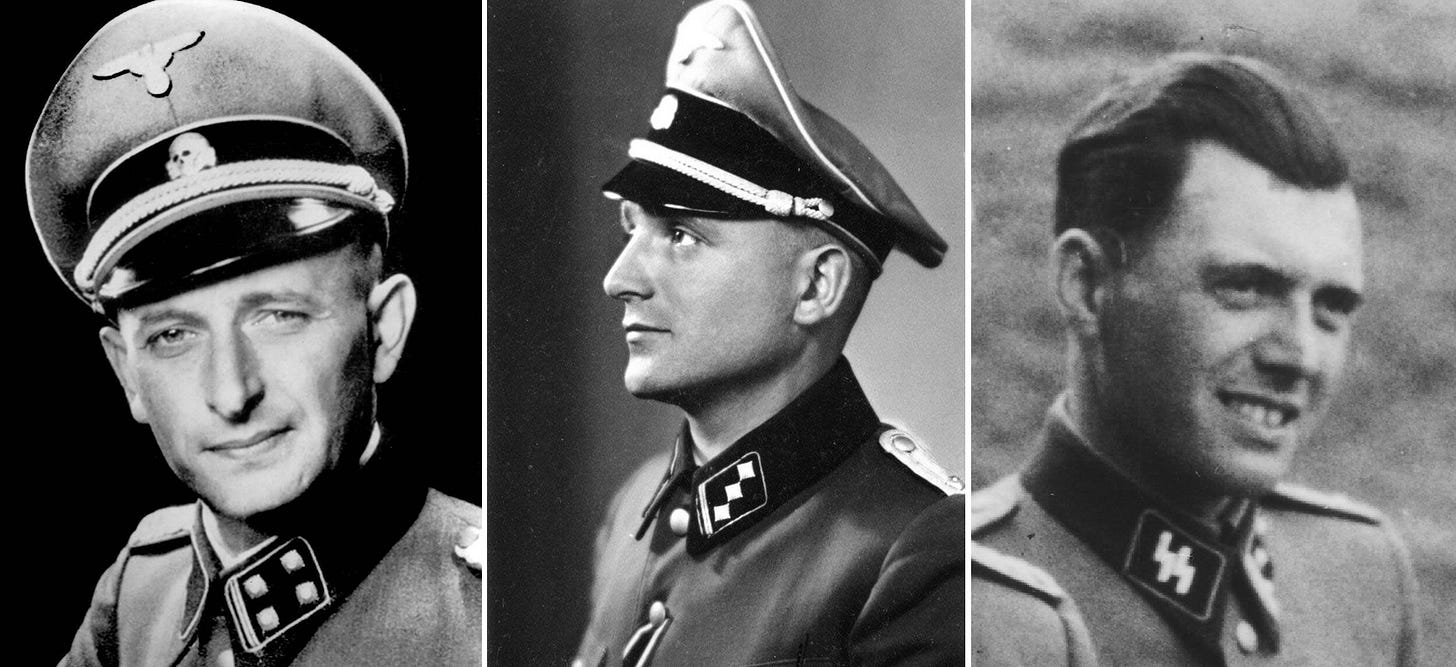The Nazi Refugees in Latin America
Where, How Many, Who, and Why
How Nazis and their collaborators in the various conquered European States got to Latin America after the Third Reich was demolished in the spring of 1945 is an interesting story in itself, perhaps one to be treated separately in the future. The focus of this article is where exactly the Nazis who fled to the Western Hemisphere went, how many managed to escape this way, who they were, why this refuge was available, what the Nazis did in exile, and what it all amounted to in the end.
ARGENTINA
In another victory for stereotype accuracy, Argentina, under Juan Perón (r. 1946-55, 1973-74), was ground zero for the Nazi presence in Latin America, unique in the systematism and scale of the Nazi refugees it took in, and the degree of ideological sympathy the government had with Nazism.
Peronism is notoriously difficult to define, and even more so after the 1970s when claimants to that label split into Right- and Left-wing factions. Nonetheless, the ideology of Perón, and the features of his 1946-1955 regime as it actually existed, are easier to describe, and clearly drew on the model of European fascism. While it is true that Perón largely eschewed the distinctive doctrinal aspects of Nazism,1 Perón’s bête noire was liberal Britain and his political hero was Benito Mussolini. To that extent, it is unsurprising Perón found much to admire in what Adolf Hitler had done in Germany when he visited in the late 1930s, and that during the Second World War Perón was more instinctually sympathetic to the Germans, and, indeed, maintained contact with Berlin. In 1944, as Perón, then-the vice president, emerged as the dominant figure in Buenos Aires, Argentina began coordinating with the Nazi government for its officials—and those of its Ustaše colony in Croatia in particular—to be received in Argentina, a contingency that went into effect the next year.
Perón did not admit the Nazi refugees solely because of his ideological orientation—both in its fascist-sympathetic and anti-British dimensions—but it is important to understand the permeating influence of this factor, which is often minimised or obscured altogether in apologetic works about Perón. As an example: Perón’s view of the Nuremberg trials as “victor’s justice” was widely shared in Latin America, and they were not wrong. Nor was it unusual for Latin Americans, whether on the “anti-imperialist” Left or nationalist Right, to view the efforts to hunt fugitive Nazis after 1945 as hypocritical and vindictive, and as a threat to their country’s sovereignty. What was unusual about Perón was the intensity with which he held this view, and his determination “to save all the German officers he could”. And ideology came into play not only in Perón’s willingness to open up Argentina as a Nazi sanctuary for their sake, but his view of Nazis as unproblematic immigrants to assist his proclaimed project of modernising Argentina into a great industrial and military power via a “third way” that was anti-liberal and anti-Communist.
Perón advertised Argentina as a safe haven for all Europeans to rebuild their lives after the displacement and ravages of the war. Perón’s hope was to benefit economically and administratively from an educated population with technical and scientific expertise, and to secure the country’s sovereignty by using the new additions to the Argentine population to colonise the sparse zones, especially along the borders. The tendency to see Germans as an industrious and thrifty people particularly well-suited to such tasks, which was not unique to Perón in Argentina,2 coincided with the interest a large number of German military officials, bureaucrats, scientists, and businessmen had in leaving Europe. To that end, Perón’s immigration system was designed to access this pool of skilled German labour.
Rodolfo Freude, an Argentine of German descent, a close friend of Perón’s and head of the premier intelligence agency, the Secretariat of Intelligence of the State (SIDE), oversaw the program for Nazi immigrants, and his key operational lieutenant was Carlos Fuldner, a German-Argentine “former” captain of the Schutzstaffel (SS) and earlier an officer in the Nazi Party Security Service (Sicherheitsdienst or SD). This was the start Argentina’s military-intelligence system making use of Nazi cadres, though the scale and impact is very difficult to judge. Fuldner went to Madrid in March 1945 and, in collaboration with some renegade clerics of the Roman Catholic Church,3 set up the first of the escape routes to the New World, what became known as the “ratlines”.4 The Allies were on to Fuldner by 1947, so he fled back to Argentina.
August Siebrecht, another friend of Perón’s, became “coordinator of hidden immigration”, and Fuldner started settling the Nazis in, notably by creating the Argentine Company for Industrial Projects and Implementations or CAPRI,5 ostensibly a private enterprise contracted by the government and in reality a front organisation through which the State issued false identity papers and provided the Nazis with an explanation for their income (to create a “legend”, in intelligence jargon). Gathering the Nazis in CAPRI and similar organisations that followed allowed Perón to keep tabs on his criminal guests and direct them to jobs on an as-needed basis.
Keep reading with a 7-day free trial
Subscribe to It Can Always Get Worse to keep reading this post and get 7 days of free access to the full post archives.


